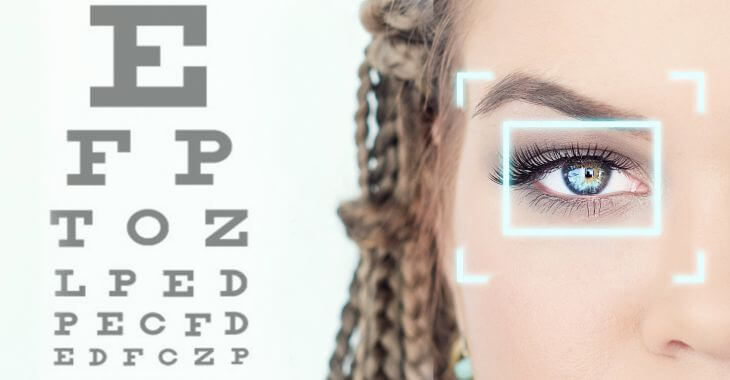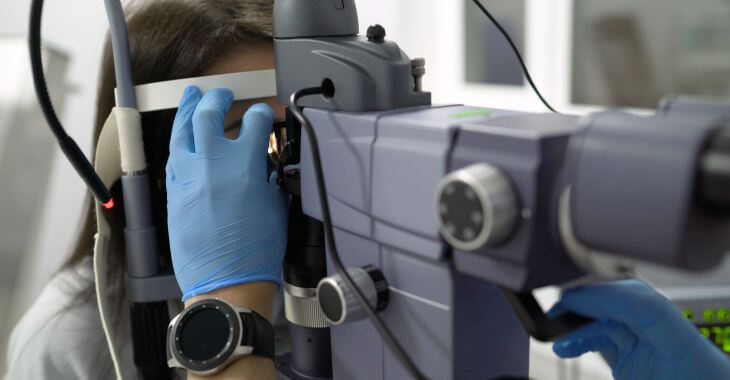What Is Laser Iridotomy for Glaucoma?

Laser technology has improved the safety and effectiveness of many medical procedures, including laser eye treatments. One of the most serious types of eye disorders is glaucoma, a group of conditions affecting the health of the eye. One of the treatments for certain glaucoma conditions is laser iridotomy. What is laser iridotomy for glaucoma and how does this procedure improve eye health?
What is Glaucoma?
Many people are unclear about what glaucoma is and how it affects vision. Glaucoma is not one disease, but a group of eye conditions that can damage the optic nerve. Glaucoma is one of the leading causes of blindness, especially among those over the age of 60 or within high-risk groups like diabetics or near-sighted individuals. When diagnosed early, glaucoma can be treated, and optic nerve damage can be minimized. One of the treatments for some types of glaucoma like acute or chronic angle-closure is laser iridotomy.
What Are Narrow Angles or Angle-Closure Glaucoma?
If your ophthalmologist diagnoses you with narrow angles or angle-closure glaucoma, what does this mean? The “angle” refers to part of the drainage system in the eye. The eye depends on fluid called aqueous humor to keep it lubricated. This fluid is created inside the eye behind the iris, the colored portion of the eye, then passes through the iris and drains out the back of the eye. A “narrow angle” refers to an acute angle between the iris and cornea, which can limit drainage and increase pressure in the eye when there is too much fluid.
Angle-closure glaucoma is a serious condition where the aqueous humor, or fluid, cannot drain properly and there is increased pressure inside the eye. This can lead to damage to the optic nerve, and in severe cases, could cause blindness. Narrow angles and angle-closure glaucoma are more common in far-sighted individuals – it is important that those with far sight are regularly checked for narrow angles. Diagnosing and treating narrow angles can prevent angle-closure glaucoma, but both conditions may be treated with laser peripheral iridotomy.
What Is Laser Peripheral Iridotomy?
To relieve pressure in the eye caused by too much fluid, your eye specialist may recommend an iridotomy. This is referred to as laser iridotomy or laser peripheral iridotomy, but these are all the same procedure. The purpose of this procedure is to allow better drainage of the aqueous humor between the iris and cornea by creating an iridotomy, which is a hole in the iris. This treatment has been used for many decades for treating narrows angles, acute closed-angle glaucoma and chronic closed-angle glaucoma.
The original iridotomy procedure was surgical – a small hole was cut in the iris with surgical scissors. While effective, this procedure had higher risks for complications. Now, iridotomy can be performed with the use of laser technology. A laser peripheral iridotomy uses a YAG or other type of laser to precisely form a small hole in the iris to relieve fluid pressure in the eye, preventing damage to the optic nerve.
What Happens During a Laser Iridotomy?
While cutting a hole in your eye may sound horrible, the laser iridotomy is actually a minimally-invasive procedure that is performed on an outpatient basis. This procedure is quick and virtually painless, with very few side effects during recovery. In most cases, the patient will be given numbing eye drops that are similar to the drops used for measuring eye pressure. A special contact lens is inserted into the eye before the procedure.
The laser iridotomy is performed with a special laser that looks like an eye examination microscope. The patient sits down at the machine and the laser beam is aimed at the iris. The drops used before the procedure close the pupil, which stretches the iris thinner, making it easier to pierce with the laser. A few laser blasts are released into the iris – the laser energy creates a small hole, which can make a popping sound. There is no pain, but patients may feel a prick when the iris is pierced by the laser.

After the iridotomy is complete, the contact lens is removed and the eye is rinsed out, and more eye drops may be added. Before the patient is sent home, the pressure in the eye is checked to ensure the laser iridotomy was effective. Over the following hours and up to three days, blurry vision and eye irritation can occur.
Laser peripheral iridotomy can prevent serious damage to the optic nerve from glaucoma that can cause permanent blindness. Regular eye exams are important to check for narrow angles or signs of glaucoma. If you are diagnosed with narrow angles or angle-closure glaucoma, your eye specialist may recommend laser iridotomy as an effective preventive procedure or as a minimally-invasive, safe treatment for your eye condition.
The information provided on this website, including text, graphics, images, and other materials, is intended solely for informational purposes and should not be used as a substitute for professional medical advice, diagnosis, or treatment.


)